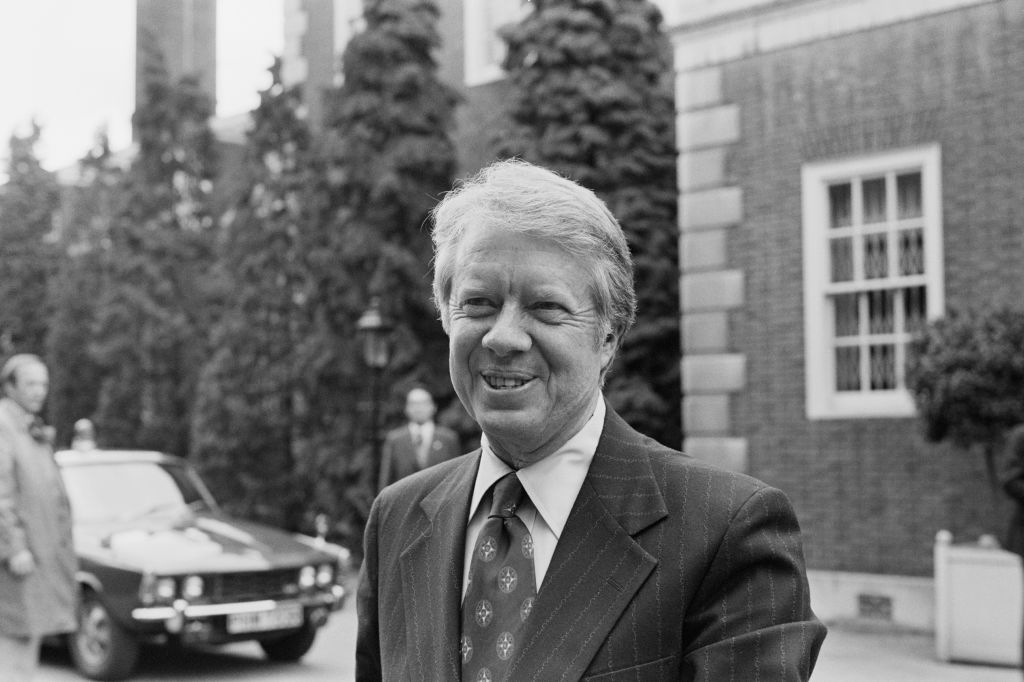President Jimmy Carter, who died earlier this week, has been praised for his humanitarian instincts. Not for nothing did he receive the Nobel Peace Prize in 2002, long after his presidency, for his continuing work in promoting human rights around the world. But as a Hungarian-born writer, my warm feelings towards him will always be associated with one of his lesser-known acts of international diplomacy: the return to Hungary of its most valued symbol of Hungarian nationhood, the Crown of St Stephen.
The golden jewel and enamel-encrusted crown, topped with its distinctive tilted cross, was crafted in the Byzantine capital of Constantinople. According to legend, Pope Sylvester II gifted it to the devout Christian, Stephen I, Hungary’s first king, for his coronation in the year 1000. This marked the beginning of Hungarian statehood, and Stephen became the country’s patron saint. From the 12th century onwards, the Crown of St Stephen was used in the coronation of at least 50 kings. It’s impossible to overestimate its significance in the national story of this ancient kingdom in the centre of Europe.
At the end of the second world war, once the Nazis had been routed from Hungary, the country was plundered by its new occupiers, the Soviets. To keep the priceless crown out of Russian hands the Hungarian Crown Guard, a unit of the Hungarian Army, entrusted it to the United States Army, who took it to Fort Knox for safekeeping alongside America’s gold reserves. And there it stayed for more than three decades until, in 1978, President Carter decided to give it back.
His decision was controversial, and several of his advisers were against it. The cold war was going strong, with the elderly unsmiling Leonid Brezhnev at the helm in the Kremlin and Hungary still firmly in the Soviet orbit. Why reward this Warsaw Pact country? But Carter could see that, amongst the Soviet satellite states, Hungary occupied a unique position. The so-called ‘goulash communism’ in practice under the leadership of János Kádár was rather more western-looking. Restrictions on the daily lives of its citizens were more relaxed than those that existed in the rest of the Eastern Bloc, and people were allowed to travel to the West. What’s more, Kadar had famously changed the old Bolshevik slogan from ‘those who are not with us are against us’ to ‘those who are not against us are with us’. Carter argued that Hungary’s improved human rights record should be recognised.
As a result, in 1978 – on 6 January to be precise, the Christian holy day of Epiphany – an American delegation led by Secretary of State Cyrus Vance and including the US-based Hungarian Nobel Prize winning biochemist Albert Szent-Györgyi, arrived in Budapest to return the Crown of St Stephen. This act of goodwill enhanced bilateral relations between the US and Hungary, allowing the latter to be granted Most Favoured Nation status, which led to increased trade, reduced tariffs and gradual economic liberalisation. All of this helped to pull Hungary further away from the USSR and its strictures.
Fast forward a decade: the first Eastern Bloc domino to fall was the Hungarian government’s unprecedented decision in September 1989 to throw open its border with Austria. The tens of thousands of East Germans who had gathered there poured through to freedom. The following month Hungary’s communist government was dissolved and an independent, multi-party republic declared. And a month after that, the Berlin Wall crumbled.
Today the stunning Holy Crown of St Stephen is on display in the Domed Hall of the Hungarian Parliament building. It can be viewed by the public on special open days. That it came back to its rightful home courtesy of a one-time farmer from small-town America – appropriately enough, a committed Christian – has never been forgotten by the grateful people of Hungary. The 1978 event was recalled in every Jimmy Carter obituary to appear in the Hungarian press.







Comments